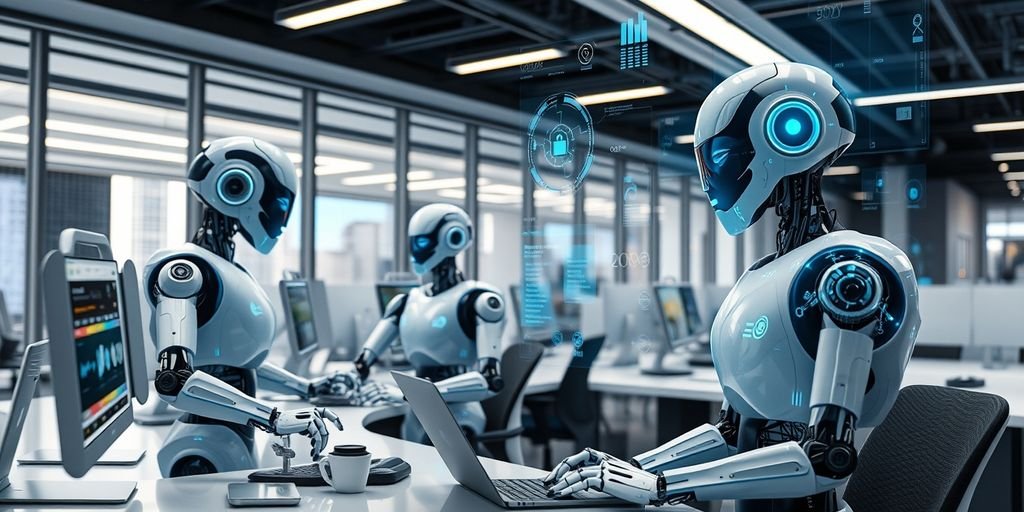In the realm of artificial intelligence, generative diffusion models stand as a transformative force, particularly in the field of custom software tool creation. This innovative AI technology leverages the power of generative models to synthesize new content, which can range from text to complex 3D models, thus opening up a myriad of possibilities for enhancing software development and content generation. As we delve into the intricacies of these models, it’s essential to understand their potential, applications, and the ways in which they can be harnessed to revolutionize industries and personalize user experiences.
Key Takeaways
- Generative diffusion models are revolutionizing the software development landscape by enabling rapid prototyping and the creation of personalized tools that adapt to user data and preferences.
- The versatility of generative AI extends across industries, transforming creative arts, content generation, data augmentation for machine learning, and offering innovative personalized solutions.
- The rapid evolution of generative AI promises future integrations into everyday tools, enhancing user satisfaction and engagement through tailored experiences and autonomous content creation.
Unveiling the Potential of Generative Diffusion Models in Software Tool Creation
The Advent of Generative AI in Custom Software Development
The integration of Generative AI into the realm of software development has been a game-changer, particularly in the context of custom software tool creation. This technology has not only streamlined the development process but also introduced a new level of personalization and efficiency.
Generative AI has always promised such improvement, by reducing repetitive tasks, on analyzing data and detecting patterns. So, it is only natural that such tools can and are being developed to enhance the capabilities of developers. Code generation and copilots represent the tip of the iceberg in a series of AI-enabled advancements that are transforming the way we develop, test, deploy, and maintain software.
The field of generative AI development will keep evolving, leading to breakthroughs in various domains. The real impact, however, will be witnessed when these capabilities become integrated into our everyday tools, reshaping our interaction with technology.
As generative AI continues to mature, we are witnessing the emergence of powerful use cases that were once the domain of science fiction. Here are some of the recent applications that highlight the versatility of generative AI in software development:
- Personalized recommendations and user experiences
- Automated content creation for digital platforms
- Synthetic data generation for machine learning models
- Creative solutions in design, music, and the arts
The potential of generative AI is vast, and as it intersects with other technologies, it promises to unlock new possibilities that will redefine the landscape of software tool creation.
Enhancing Developer Productivity and Software Quality
The integration of Generative AI into the software development lifecycle is proving to be a game-changer for developers worldwide. By automating the generation of code snippets across various programming languages, these AI models are not only accelerating the development process but also enhancing the quality of the software produced. This automation extends to the creation of test cases, which is a critical yet time-consuming part of software testing.
The ability of Generative AI to understand and write code is transforming the traditional approach to software development. It allows developers to focus on more complex and creative tasks, while the AI handles the repetitive and mundane aspects.
The impact of Generative AI on developer productivity can be quantified in several ways. For instance, it can significantly improve first response time (FRT) and first contact resolution rate (FCR), leading to better customer satisfaction (CSAT) scores. Here’s a brief overview of the benefits:
- Improve lead generation by 20% – Generate high-quality leads with accurate targeting
- Increase customer engagement by 60% – Engage users effectively at the right time and channel
- Improve CSAT by 40% – Provide a contextual history across channels for effective communication
By leveraging Generative AI, developers are empowered to deliver higher quality software at a faster pace, ensuring that businesses can respond more swiftly to market demands and customer needs.
Revolutionizing Content Creation with Autonomous Generative Models
The advent of generative AI models has been a game-changer in the realm of content creation. These ‘creative machines’ are capable of autonomously producing diverse forms of content, including text, images, and videos, by learning from existing data patterns. This innovation is particularly impactful in industries like marketing, where the need for standout content is paramount.
One recent development in this space is OpenAI’s new generative tool, Sora, which has the potential to revolutionize marketing strategies. Sora’s ability to generate custom videos based on textual prompts opens up a world of creativity and personalization for brands. This could be a significant advantage in a crowded digital landscape, where unique content is key to capturing consumer attention.
Generative AI expands the possibilities of visual content creation and manipulation, pushing the boundaries of what can be achieved with automated systems.
The implications of such technology are vast, with generative AI poised to transform not only how content is created but also how it is consumed. As these models become more sophisticated, we can expect a surge in high-quality, personalized content that resonates with audiences on a new level.
Groundbreaking Applications of Generative AI Across Industries
Transforming Creative Arts and Content Generation
The intersection of generative artificial intelligence and human creativity is forging new pathways in the arts. Artists and content creators are leveraging the power of generative AI to enhance their productivity and bring novel concepts to life. The impact of these technologies is not just theoretical; recent studies suggest that generative AI significantly boosts artists’ productivity and leads to more favorable evaluations from their peers.
In the realm of content generation, the capabilities of generative AI are particularly striking. These models can autonomously produce text, images, and videos, pushing the boundaries of what’s possible in creative industries. For instance, the automatic generation of articles, stories, and artwork is no longer a distant dream but a tangible reality.
The synergy between AI-driven content creation and human ingenuity is creating a new era of digital artistry.
Here are some key applications of generative AI in content generation:
- Generating new articles, blog posts, and product descriptions based on specific keywords or topics.
- Optimizing existing content by analyzing keywords, structure, and tone.
- Producing AI-generated artwork, music, and virtual characters that demonstrate the multi-modal capabilities of these models.
Innovating in Data Augmentation and Machine Learning
The application of generative AI in the realm of data augmentation is not just a trend; it’s a transformative force in machine learning. By generating synthetic data, these models expand training datasets, enabling more robust and diverse machine learning models. This study pioneers the exploration of data augmentation techniques explicitly tailored to transformer FRA data.
To ensure the success of generative AI/ML solutions, the initial stages of data preparation are crucial. Proper data normalization and standardization are essential to guarantee that the model can generalize across a range of inputs. Selecting the right generative AI algorithms is equally important, as it sets the stage for effective model training and assessment.
While generative AI holds immense potential, it’s imperative to mitigate risks associated with biased or toxic content. Careful selection of initial training data, employing specialized models, and keeping a human in the loop are some of the strategies that can be employed to minimize these risks.
In healthcare, generative AI is revolutionizing the field by enhancing imaging techniques, accelerating drug development, and tailoring treatments to individuals. Yet, it’s important to navigate the ethical and regulatory considerations to ensure responsible implementation.
Pioneering Personalized Solutions with Generative AI
The landscape of software development is undergoing a profound transformation, thanks to the advent of generative AI. This technology is not just a tool but a game-changer, enabling the creation of highly personalized software solutions that adapt to user preferences and behaviors. By analyzing vast amounts of data, generative AI can tailor experiences to individual needs, making every interaction unique and more intuitive.
One of the most compelling applications of generative AI is in the realm of education. Here, it facilitates personalized learning paths, adaptive tutoring systems, and the generation of intelligent content that resonates with each student’s learning style and pace. This not only enhances the educational experience but also maximizes the potential for student success.
In the marketing sector, generative AI is making waves by crafting campaigns that speak directly to the consumer. It leverages customer data to produce dynamic advertisements and personalized product recommendations that significantly boost engagement and conversion rates. Below is a list of ways generative AI is enhancing customer-centric strategies:
- Personalized content creation for emails, social media, and product descriptions
- Dynamic product recommendations based on individual purchase history
- Customized email campaigns that reflect user behavior and preferences
Generative AI stands at the forefront of innovation, driving personalized solutions that are reshaping industries and redefining user experiences.
As we continue to explore the changing face of Software Development, it’s clear that generative AI is not just reshaping the Software Development Lifecycle but is also introducing innovative approaches that are setting new benchmarks in technology.
Conclusion
Generative diffusion models stand at the forefront of AI innovation, offering a transformative approach to creating custom software tools. As we have explored, these models harness the power of generative AI to automate and enhance content creation, data augmentation, and personalized solutions across various industries. From revolutionizing drug discovery to reshaping content generation and beyond, the applications of generative AI are vast and still expanding. Businesses that integrate these cutting-edge tools into their operations can expect to see significant improvements in efficiency, creativity, and customer engagement. As the technology continues to evolve, it is clear that generative AI will play a pivotal role in the future of software development and the broader landscape of artificial intelligence.
Frequently Asked Questions
What is generative AI and how is it transforming software tool creation?
Generative AI refers to artificial intelligence that can generate new content based on a range of inputs such as text, images, music, and more. In software tool creation, it enables rapid prototyping, enhances developer productivity, and improves software quality by automating data collection and analysis, thus transforming the development process.
What are some of the most innovative uses of generative AI across industries?
Generative AI has found innovative applications in content generation, creative arts, virtual assistants, chatbots, and personalized recommendations. It’s also used for data augmentation in machine learning, creating synthetic datasets, and in areas like drug discovery, anomaly detection, and even space exploration.
How can businesses leverage generative AI for competitive advantage?
Businesses can use generative AI to automate and personalize content creation, offer tailored solutions to customers, and enhance user experiences. By integrating generative AI into everyday tools, companies can improve efficiency, foster innovation, and stay ahead in their respective industries.



